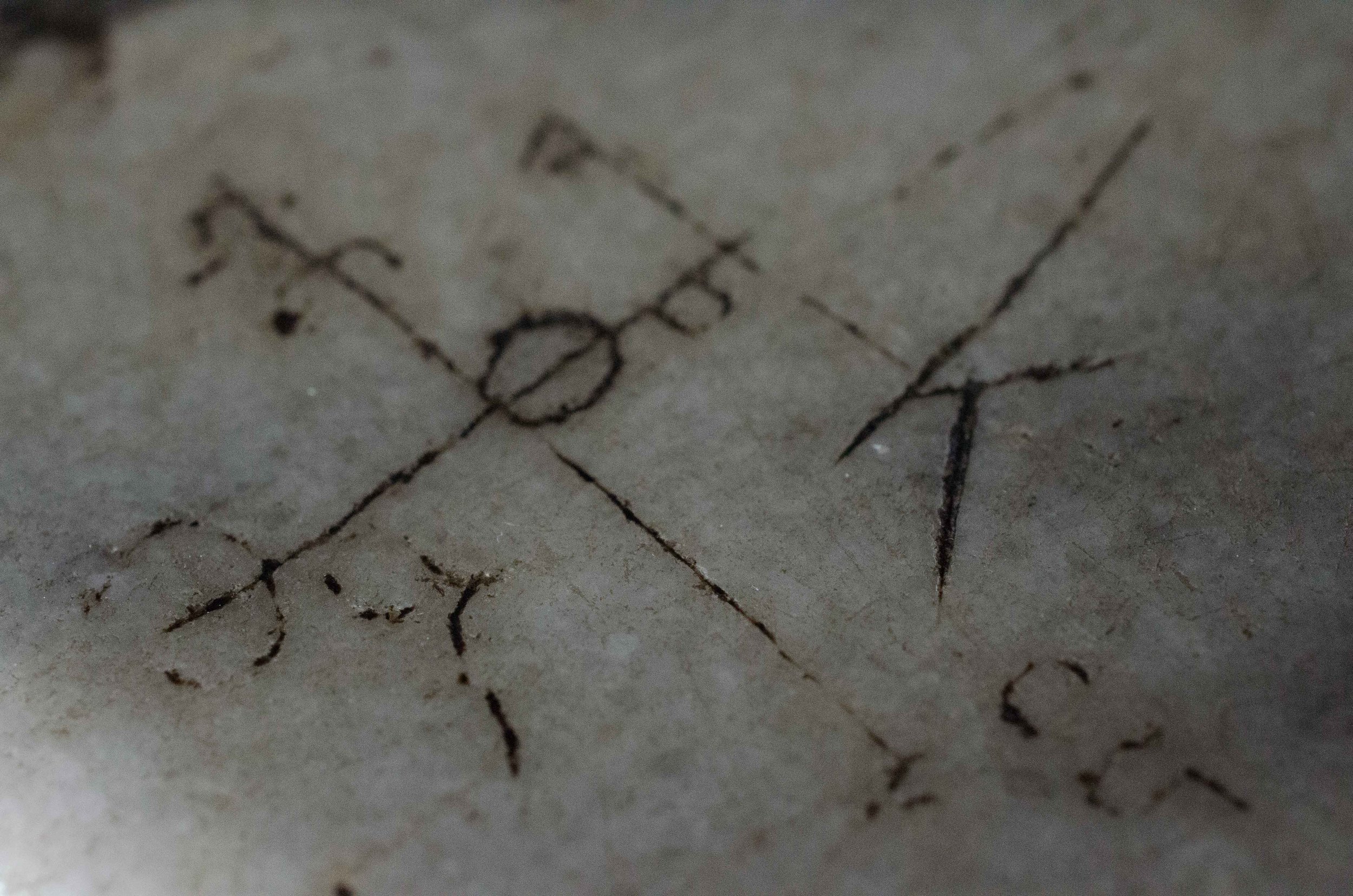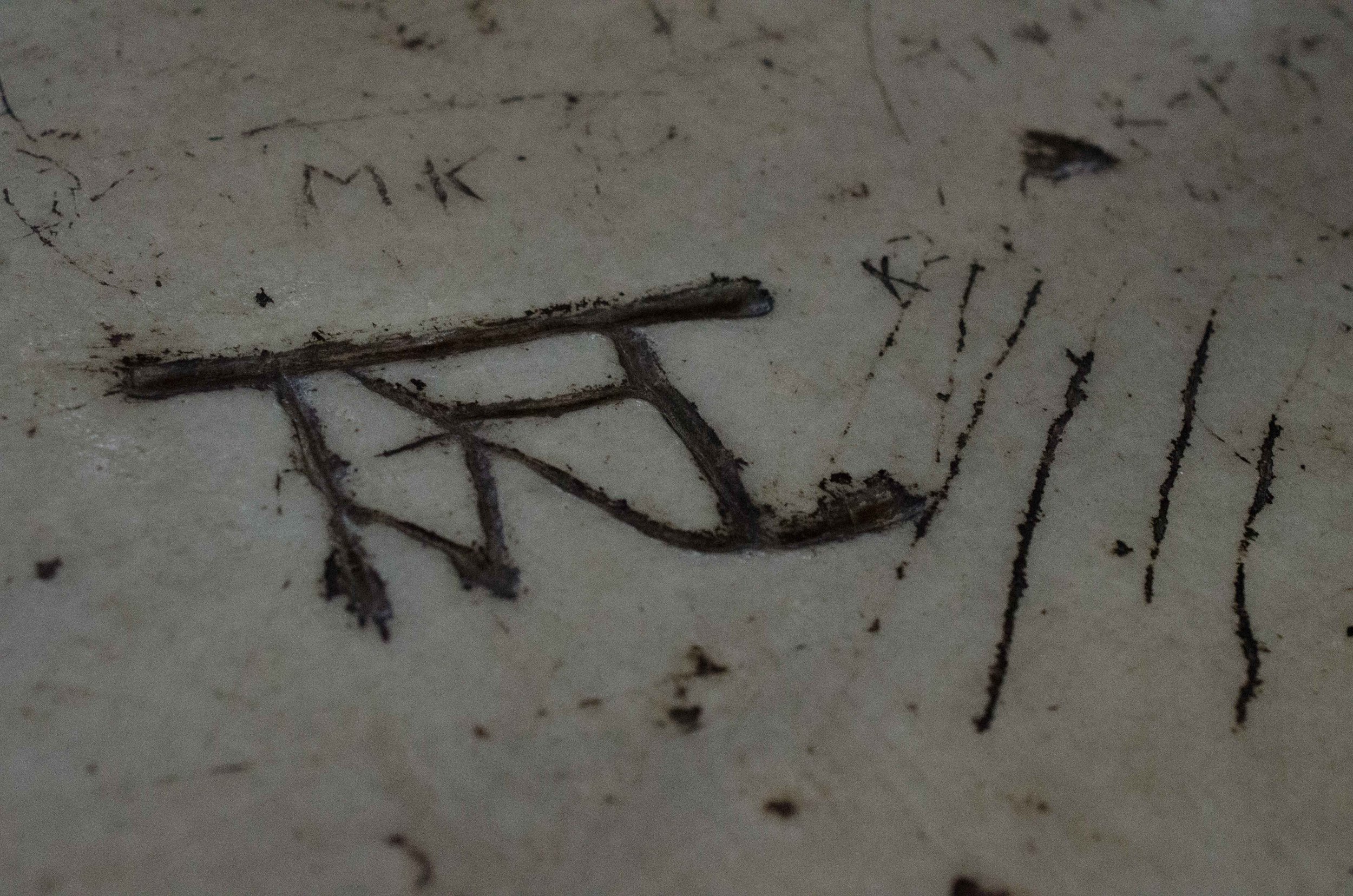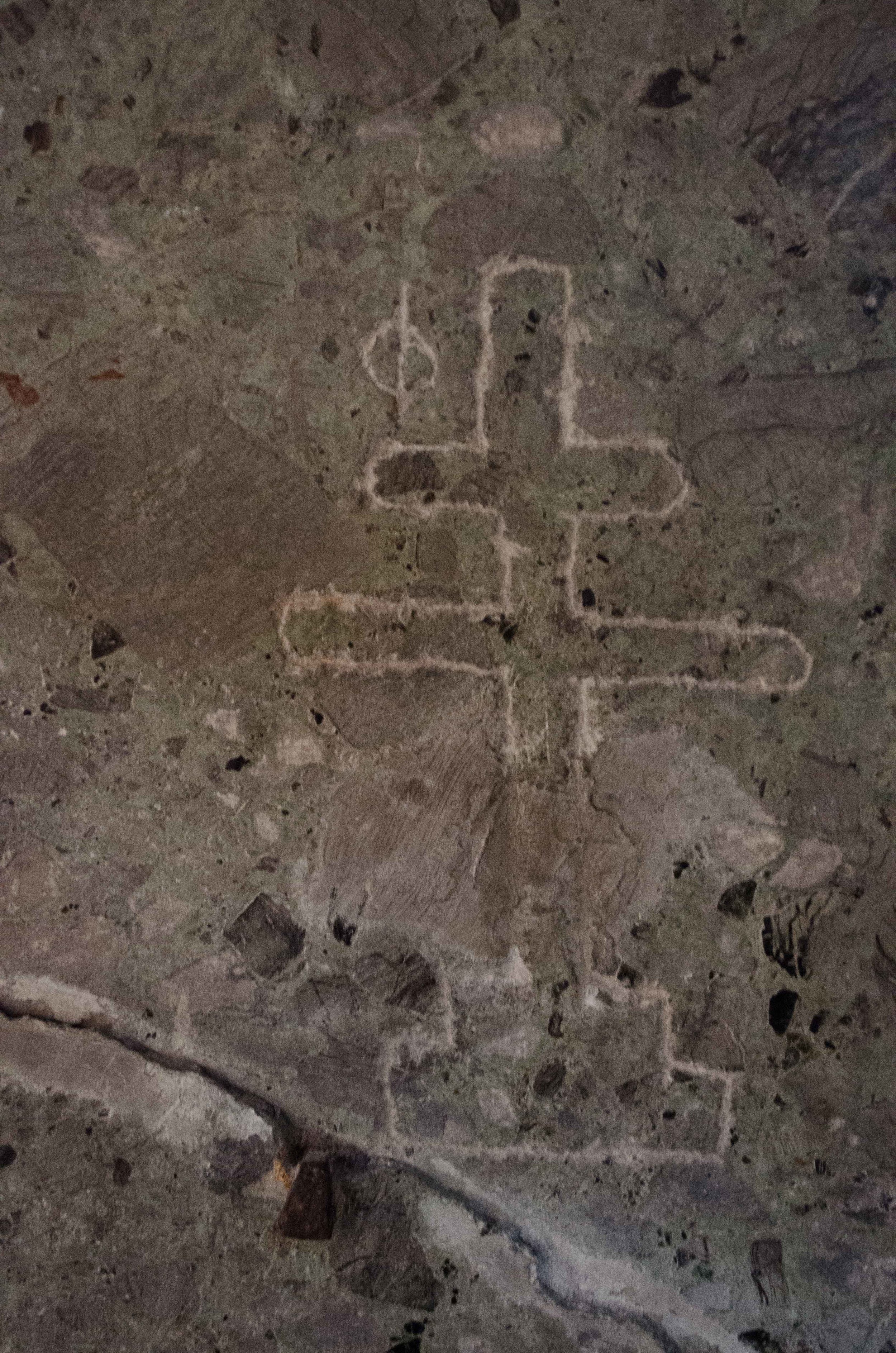Some of you might have heard of the famous 9th century Viking runic inscription carved into the balustrade of the gallery of the Hagia Sophia. First, it is worth pointing out that the presence of Vikings in Byzantium was not unusual; the elite imperial Varangian guard was likely composed of Rus Vikings, and there is heavy evidence of constant and steady trade between the Scandanavian regions and the Islamic world, facilitated by Constantinople. The runes are too old to be clearly read, and so we don’t really know what “Halfdan” was doing or thinking at the time he left his mark on this glorious building.
Viking runes
I am fascinated by both modern and historical graffiti, and so I made sure to try to find the runes while I was exploring the Hagia Sophia; the experience of looking for them was fascinating, and opened my eyes to the hundreds (if not thousands) of people who have, like Halfdan, left their mark on the building. Though the Vikings get top billing, there are both older and younger inscriptions surrounding the runes, and inscribed into many of the walls at eye-level throughout the second story. They vary from full names to initials to signs. Some are in Greek, some in Latin, others in Arabic, and even (I think) in Asian characters.
In fact, you could give a quick overview of medieval and Early Modern hands from these inscriptions!
But truly, the ones that really grabbed me, and the ones that I will probably remember long after other details of my trip have faded, were the simple crosses or other marks of the (possibly illiterate) pilgrims visiting this holy site. One person simply marked his presence by drawing a stick-man on the wall:
What I keep thinking about is the way that so many people have been compelled to leave a part of themselves, to mark their visit and their presence in this place—to say to the world (and possibly to God/Allah) “I was here.” My visit mattered. My time here is worth noting. I think this is more than just “tagging”—itself also a fundamental claim of presence at a particular place, because of the cultural, spiritual, and historical meaning of the building. There is no denying that it is an exceptionally special place (see my last post), and this would not have been lost on visitors, even if they didn’t speak the language or culturally identify as “Byzantine.” I suspect this is much less like spray painting a wall and a lot more like buying conch shells at Compostelo, kissing Oscar Wilde’s grave (for a sad update, see here), taking a rubbing from the Vietnam memorial, or throwing a coin in the Trevi fountain. It’s a way of proving to yourself that you have made a meaningful trip, that it has changed you, that you acknowledge the power of the place, and that somewhere, deep down, you want it to matter that you were there.
Today, we do that with pictures (I’m perfectly complicit in this), but when that wasn’t an option, people chose other means. This is famously true of Persepolis’ ruins, where many people have left their mark, including Cornelius de Bruijn, a Dutch artist who was the first to publish drawings of the site, and Henry Stanley (of Dr. Livingston fame).
This is of course not only things that people do to buildings they visit. They do it to buildings they build as well. The pantheon of Rome (until now my favorite building I had ever visited) shouts to the world, “M·AGRIPPA·L·F·COS·TERTIUM·FECIT”, or Marcus Agrippa son of Lucius made this during his third consulsip.”
For the Hagia Sophia, I keep returning to how similar the actions of the people who etched crosses onto the walls were to the actions of an Emperor who commissioned the building—the desire to be remembered, to be noticed, and to leave behind a trace of your presence in a place that has meaning to you. After all, isn’t the idea of “I was here” exactly what lies behind Justinian’s Solomon quote???






